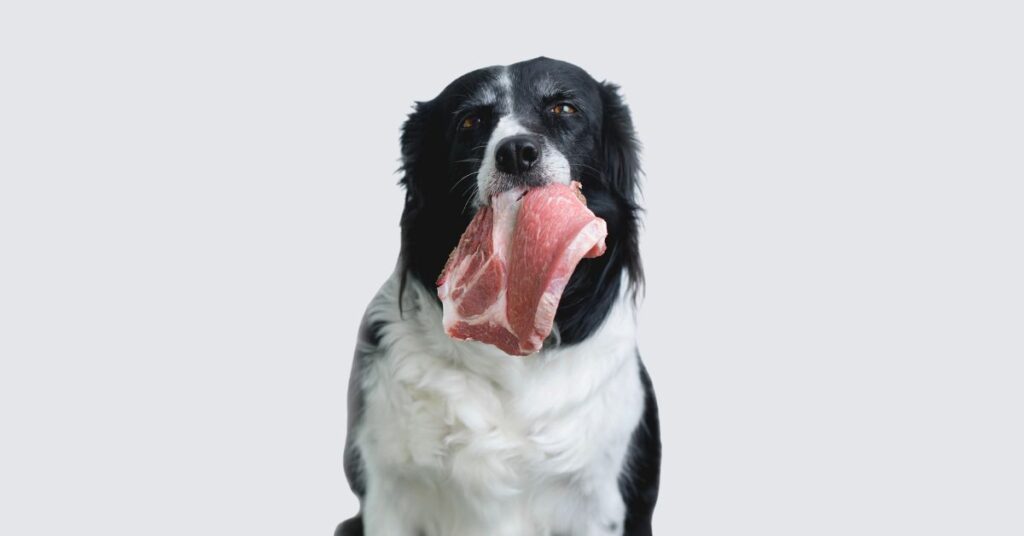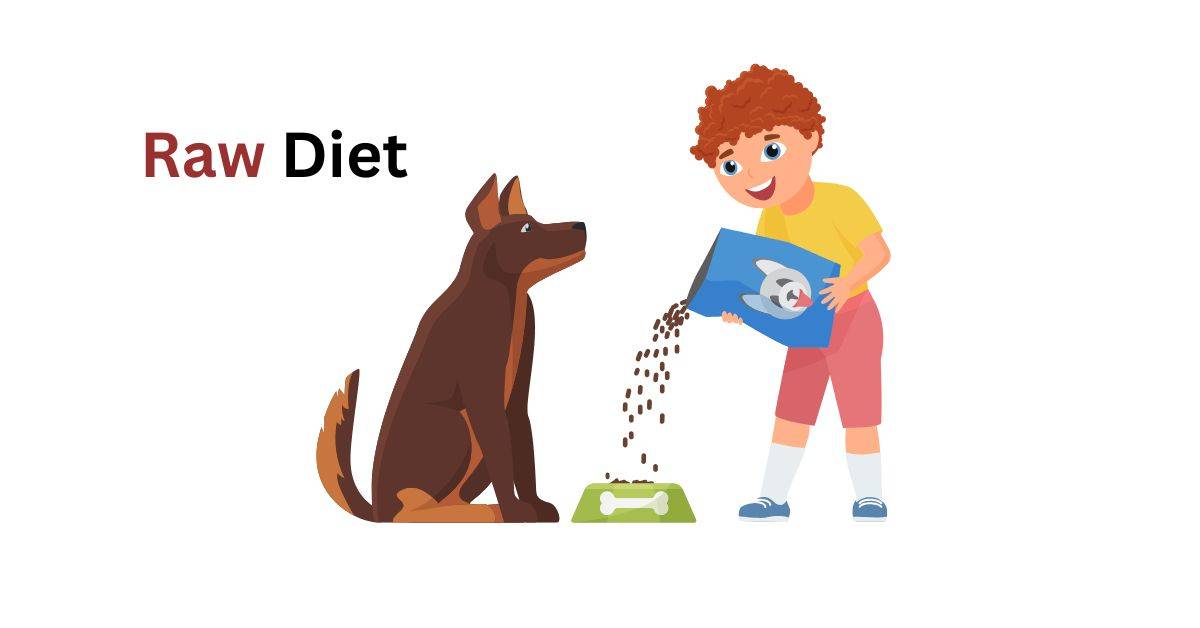Feeding your dog raw can provide numerous health benefits, ranging from improved digestion to a shinier coat. But finding the right average amount for your dog can be difficult to recognize. Below, we will delve into How Much Raw Diet to Feed Dogs based on breed size, age level (from puppies to adults), along with activity and health requirements.
Understanding the How Much Raw Diet to Feed Dogs
A type of this diet is a raw food diet, also known as BARF (Biologically Appropriate Raw Food), which usually consists of these 4 types: raw meat bones, fruit, and vegetables the aim is to emulate the natural diet of dogs in their wild state. Proponents of raw feeding claim that a diet rich in uncooked animal products can result in better health, increased energy levels, and fewer food allergies or intolerances.
Variables to Consider for Raw Diet Portion Size

1. Dog’s Age
- Puppies: Any puppy is going to need more calories than a grownup dog. Feeding raw food should account for approximately 8-10% of the puppy’s body weight.
- For adult dogs: the recommended amount is 2-3% of their body weight.
- Senior Dogs: Due to their reduced activity levels, older dogs may require a smaller meal, typically consuming 1.5-2% of their body weight.
2. Dog’s Size
- Small breeds (up to 20 lbs.) Small dogs typically consume approximately 3-5% of their body weight in raw food.
- Medium Breeds (20-60 lbs.): 2%-3% of body weight
- Large Breeds (over 60 lbs.)—large dogs may need about 1.5–2% of their body weight in raw food,
3. Activity Level
- Dogs that Exercise Often: Dogs who are regularly exercised or used to work may need a little more food than usual—about 3–5% of the body weight.
- Sedentary/Overweight Dogs: Less active dogs may need less—about 1.5–2% of their body weight.
Health Considerations

- Ensure weight management: If your dog is carrying some extra weight, it might be time to reduce the amount of food they receive or reach out to a veterinarian for specific information on creating an appropriate feeding plan.
- Health Issues: Dogs suffering from specific medical conditions may require a prescription diet. Always exercise caution and seek veterinary supervision before making any dietary changes for your dog.
Calculating Raw Diet Portions
How much raw food do you need? To calculate this, use the formula below:
- Body Weight: Weigh your dog in pounds.
- Find the Percentage: Determine your best percentage (between 1.5% and 10%), considering all these factors.
- Set the percentage: then multiply your dog’s weight by that value. The result is how much raw food you should feed per day.
Example: This refers to a 50-pound active adult dog.
• Recommended food amount = 50 lbs. x 3%, so daily safe defrosting of raw meat and weight of the grated pulp—OUR POOPED PILLOW CASE IS SAFE.
Types of Raw Food to Include

Feeding your dog a raw diet is important to offer different food groups, whatever the reason for concern about canine nutritional requirements.
- Salads: a blend of green vegetables and an oil dressing
- Meat: beef, chicken, turkey, lamb, or fish
- Bones: Feed raw meaty bones for calcium and dental health (do not feed cooked bones).
- Frutas y hortalizas: Zanahorias, manzanas, espinacas, y batatas son muy buenos.
You could add supplements like fish oil and probiotics to improve your health.
Feeding Frequency
HOW OFTEN TO FEED: The frequency of feeding can also influence the way a raw dog food diet is fed.
- Puppies: 3-4 times per day.
- Adult dogs: 1-2 times per day
- Senior dogs: 1-2 times, depending on their needs.
Adjusting the Diet
Monitor your dog’s weight, energy level, and overall well-being once you begin a raw diet. If you see some changes in the form (e.g., to start with, it’s weight gain), modify the portions. Make sure your dog visits the vet regularly to ensure they are responding well to their new diet.
Conclusion
Raw diets can be a beneficial option for your dog…if you do them right. Depending on your dog’s age and size, determine the appropriate amount to feed, considering factors like their activity level and any health issues that may influence it. Even paying attention to smaller amounts and a healthy diet can benefit the overall health of your pet in question. For the health of your dog, always consult with your vet before making serious modifications to its diet.
FAQ
What is a raw diet for dogs?
A raw dog food diet, sometimes called BARF (Biologically Appropriate Raw Food), consists of raw meaty bones as well as fruits and vegetables. This diet aims to replicate the natural diet of dogs, promoting better digestion and overall health.
How Do I Determine How Much Raw Food To Give My Dog?
Multiply your dog’s weight by a certain percentage (which changes with their age, size, and exercise) to calculate the amount of raw food. Typically, adult dogs require 2-3% of their body weight in raw food, and puppies may need as much as 8-10%.
What feeding schedule is appropriate for a raw diet?
Your dog’s age determines how frequently you feed; puppies typically eat 3–4 times a day, while adults and seniors only require feeding once or twice daily.
Can I just start feeding my dog raw?
When you change your canine’s diet plan to a raw dog food meal, do it gradually over 7-10 days. Introduce it slowly by mixing in a very little raw food with their current diet and increasing the portion of raw over time.
What Meats to Feed When Raw Feeding a Dog
Your dog needs a specific kind and superior quality of raw meat, such as beef, chicken, turkey, lamb, and fish, to absorb all the essential nutrients.

